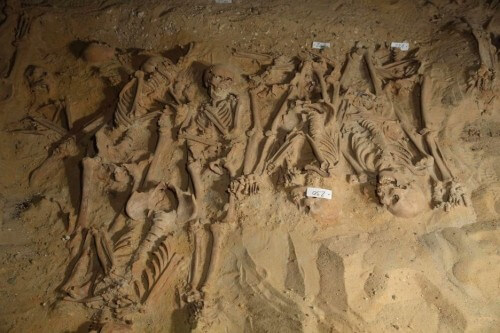First session: Millennia-year-old DNA provides new information on the migration of the first settlers to Europe will open the "At the Gates of the Academy" lecture series on November 11 at the Israel National Academy of Sciences

A new series of meetings and lectures for the general public on popular science topics will open on November 11. The lecture series "At the gates of the academy" is sponsored by the Israel National Academy of Sciences. The lectures, six in number, will be held every month with the participation of members of the academy, researchers and intellectuals who will examine together a common topic from a multidisciplinary perspective. The series of lectures was initiated by Professor Neely Cohen, the new president of the Academy, who emphasizes that the purpose of the lectures is to make new and fascinating scientific topics accessible to the general public, and in the spirit of the teachings of the first president of the Academy, Prof. Martin Buber, we are committed to strengthening the values of learning and excellence in Israeli society.
The first lecture in the series on the topic "Human melting pot: about ancient DNA and ancient migrations to Europe" will be held on Wednesday, 11 March 2015, November 19, 00, at 43:XNUMX p.m. at Beit Hadakademia, Albert Einstein Square, Jabotinsky St. XNUMX, Jerusalem. Prof. Shulamit Volkov from the Department of History of Tel Aviv University and the Academy Society, and Prof. Liran Carmel from the Department of Genetics at the Hebrew University of Jerusalem will talk at the meeting.
Researchers have long wondered how settlers migrated and spread across Europe. Until recently, scientists who delved into this subject had to content themselves with examining the findings using traditional archaeological research methods. But today scientists have begun to extract DNA samples from human bones, and the findings that emerge from them provide a new glimpse into the history of the first immigrants to Europe.
According to Prof. Liran Carmel, we are all similar but nevertheless different: most of the human DNA is the same in all humans, yet there is a certain genetic variation, which mainly reflects the geographical dispersion of different populations. The genetic revolution we are living in the midst of today makes it possible to easily read the DNA sequence of many people and use it as a history book that teaches us what happened to human populations in the last thousands of years. One of the significant discoveries is that the structure of the current populations does not reflect the structure of the populations a few thousand years ago. For example, Italians of today are not residents of the Italy of the past, Germans of today are not residents of the Germany of the past and so on.
Many processes have changed the structure of populations over the generations. The most prominent of which are large population migrations. Much can be learned about these migrations from archaeological finds, but today they can also be seen directly in our DNA. Furthermore, a technological revolution that has taken place in recent years allows us today to read DNA from ancient bones, and thus you can directly see the DNA of individuals who lived thousands of years ago and even tens of thousands of years ago. This is how, for example, we learned about the DNA of the Neanderthal man and how it differed from ours. And so a global effort is being made today to read the DNA of farmers and hunter-gatherers who lived in different parts of the world thousands of years ago. And this DNA tells us wonderful historical stories.
Another participant in the series is Prof. Oded Aharonson from the Weizmann Institute of Science, who will lecture on December 2 on migrations into space: the search for life and living spaces for them outside the earth, as well as the author Avraham B. Yehoshua, who will speak about journeys in literary space and time. The series was edited by Prof. Yadin Dodai, Prof. Avner Holtzman and Prof. Israel Finkelstein.

2 תגובות
We all understand the significance of the current immigration to Europe. In the perspective of decades and not even 5 centuries as happened in the Roman Empire - where immigration continued from the days of Augustus (who lost 3 legions in Germany) and continued to the days of Christ who offered a humane Torah to non-Jews, until the fifth century when the Roman Empire was destroyed and the world entered the Middle Ages only in the 14th century began to emerge from them in a process that continues to this day in the 21st century. On the one hand, each family immigrates on its own - it hurts my heart, and on the other hand, I see them protesting in 20 years - for the lack of equality.
Do you need to register for lectures?